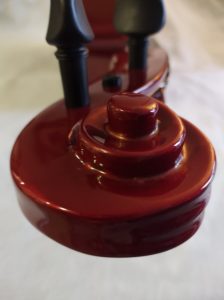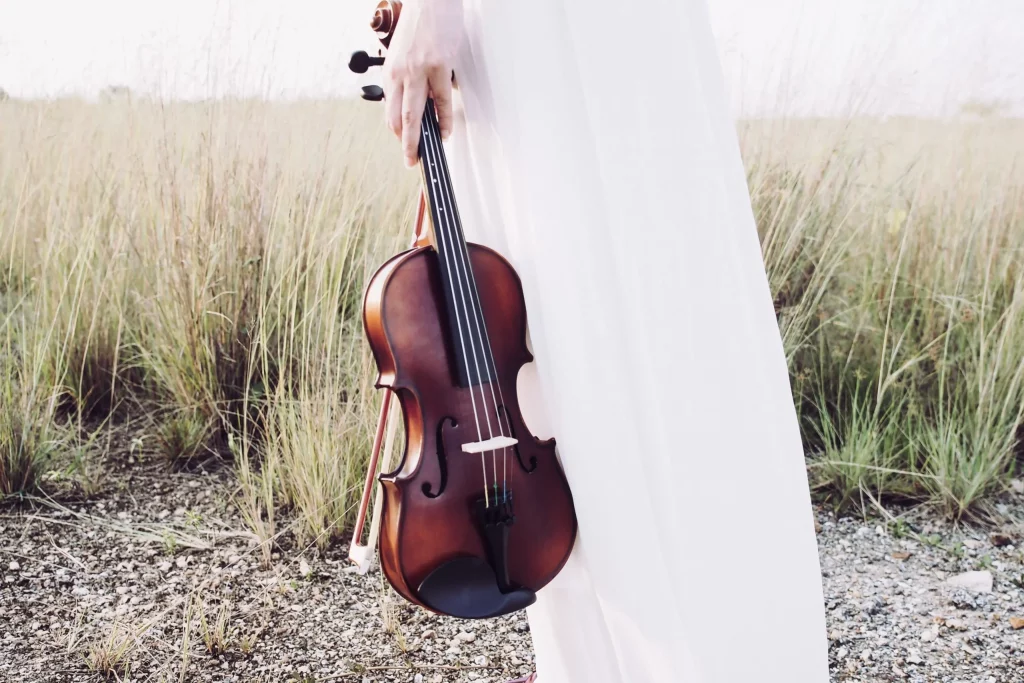The first thing you’ll notice about a string instrument is that it’s constructed of wood, carbon fibre, or other material, so why is it called a string instrument? The body of string instruments are made of various types of carbon fibre or wood and are hollow inside to allow sound to vibrate within them, but the component of the instrument that generates the sound is the strings, which are made of nylon, steel, or sometimes gut. The most common way to play the strings is to draw a bow across them. The bow’s grip is constructed of wood or carbon fibre. The players will sometimes pluck the strings with their fingers, and other times they will turn the bow upside down and play the strings with the wooden handle.
The strings are the orchestra’s largest family of instruments, and they come in four sizes: the smallest, the violin, viola, cello, and the largest, the double bass, also known as the contrabass.
String Instruments
 Musicians pluck the strings with their fingers or a plectrum on some string instruments, and beat the strings with a light wooden hammer or rub the strings with a bow on others. The musician hits a key that plucks the string on various stringed instruments, such as the harpsichord. The performer of bowed instruments vibrates the strings by pulling a rosined horsehair bow across them. The performer plays a hurdy-gurdy by cranking a wheel whose rosined edge meets the strings. There are lots of types of string instruments. Prima Sonoro creates violins and cellos for sale in Canada, USA, and worldwide. Prima Sonoro creates custom violins and cellos for the string instrument music community.
Musicians pluck the strings with their fingers or a plectrum on some string instruments, and beat the strings with a light wooden hammer or rub the strings with a bow on others. The musician hits a key that plucks the string on various stringed instruments, such as the harpsichord. The performer of bowed instruments vibrates the strings by pulling a rosined horsehair bow across them. The performer plays a hurdy-gurdy by cranking a wheel whose rosined edge meets the strings. There are lots of types of string instruments. Prima Sonoro creates violins and cellos for sale in Canada, USA, and worldwide. Prima Sonoro creates custom violins and cellos for the string instrument music community.

Violins and cellos are the most popular string instruments in modern times. Stringed instruments are any musical instrument that generates sound by vibrating stretched strings made of vegetable fibre, metal, animals, silk, or synthetic materials like plastic or nylon. A resonating chamber or soundboard is used in practically all stringed instruments to amplify the sound of the vibrating string. The string can be struck, plucked, rubbed (bowed), or blown (by the wind); the effect is the same in each case: the string is displaced from its typical resting position and vibrates in intricate patterns.
We have a large inventory of lovely unique, modern, and student instruments. Have you seen something you like? Contact us to set up an order or a shipment!

